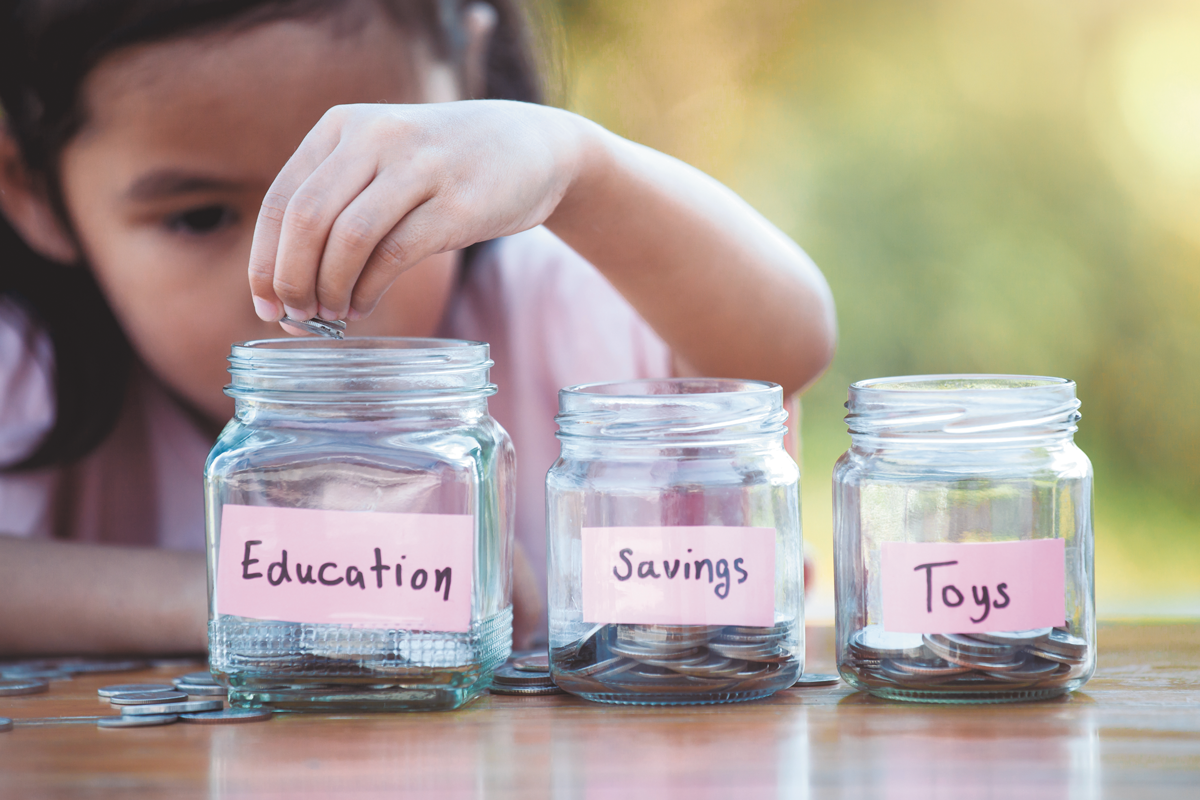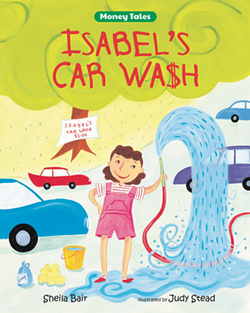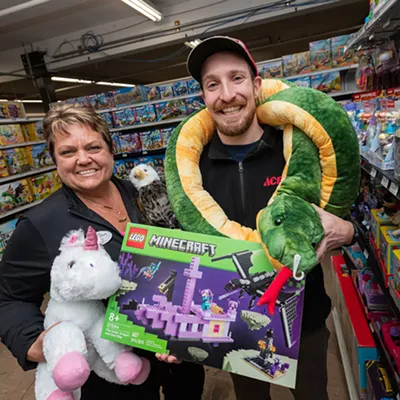Money may talk, but as a kid, Elizabeth Burtner never heard a word about it. "When I was growing up, we didn't talk about money," she says. "It wasn't a conversation that you had."
These days, Burtner is all about combating the financial reticence that still prevails in many households. As a community development manager for STCU, talking openly about money and the need for responsible budgeting is a regular part of her job. She and her team are often called into schools to present the subject to young children.
But why the need to bring frank discussions about money into the classroom? After all, it might be years before the students have a credit card of their own or are expected to balance a checkbook.
"Studies have shown that kids as young as 2 start to understand the relationship between money and getting things," she says. "They might not understand the concept of money, but they know that this thing gets that thing. So they're already making that connection. At 7 years old, they've already formulated their relationship with money and their thoughts about money."
That early relationship with personal finances has implications for their near- and long-term well-being. A 2013 study from Northwestern University based on data from the National Longitudinal Study of Adolescent Health found that adults ages 24 to 32 with high debt-to-asset ratios also tended to self-report higher perceived stress and depression, worse general health, and significantly higher blood pressure. And with chronic debt, those issues tend to worsen with age. Hence the need to instill healthy financial behaviors well before kids reach their teens.
How exactly that's done can vary from family to family and even from child to child. Even something as conventional as allowances offers some room for interpretation.
"There are lots of schools of thought out there about whether you give allowances or you make them earn their allowance or you just have budgets for clothing," says Sarah Hysjulien, who is Burtner's colleague and a community development officer at STCU. "You just have to be real intentional about how you're going to teach your children."
In this hyper-connected age of smartphones and digital tablets, Hysjulien says parents can choose among a growing number of apps to use as tools for age-appropriate financial education. RoosterMoney, for example, lets families track chores, schedule allowances and set savings goals. For older kids, there's Step, which gives teens access to a free FDIC-insured bank account and a debit card.
But even old-school exercises that illustrate basic financial concepts can be just as valuable as high-tech solutions. Having three jars — one labeled "Save," a second labeled "Spend" and a third labeled "Share" — can help cultivate practical fund allocation behaviors that still allow for a little more flexibility than the piggy bank.
"One of the most popular and simplest activities is choosing between a million dollars or being given a penny a day and doubling it. Which would you take? Most kids say, 'Oh, gosh, a million dollars!' But it turns out that doubling a penny a day amounts to almost twice as much," says Hysjulien.
Although she qualifies that hypothetical as a "wildly exaggerated" thought experiment, it contains lessons on compound interest as well as the delayed gratification at the heart of long-term financial planning. And as researchers at Stanford University discovered in their famous marshmallow experiment, the ability to withstand the seduction of instant gratification also correlated with non-financial qualities like better social skills and healthier responses to stress.
Sometimes the teaching of healthy financial habits comes down to just involving kids in the conversations that fuel purchase decisions. Years ago, when Burtner was house-hunting as a single mother, she weighed the pros and cons of different properties with her children. The larger house would mean higher monthly payments, which would mean a smaller budget for annual vacations. Was that, she asked them, a sacrifice they were willing to make?
"My kids and I made the decision together to get the cheaper house," she says. "That's a big example, of course, but this is something you could do even when you go to the grocery store. It's OK to be more open with kids about the costs of things."
While grocery shopping might lose some of its allure with older children, there are also plenty of opportunities throughout the year to engage kids of all ages in meaningful budgeting activities. Back-to-school shopping is a prime time for kids to learn how to make the hard choices between stylish shoes or a trendy new backpack based on a strict spending cap. And during the winter holidays, local community events like Santa Express make a point of walking young children and preteens through the process of buying gifts for everyone on their list while sticking to a certain dollar amount.
"You have to let them manage that budget so that they can see the give and take. It becomes more real-world learning for them, and it makes it very tangible. Ultimately, what you want to give your children is freedom of choice, and that's what having savings gives them," says Hysjulien.
Of all the possible exercises, apps and other resources that are available to parents and guardians, both Burtner and Hysjulien say that few things are more effective than being a money-management role model. That's why it's just as important to keep social media's ostentatious displays of wealth in perspective, resist the compulsion to keep up with the Joneses and limit impulse buying.
As a society, Hysjulien says, "we're drowning in debt. The average balance on most credit cards is over $5,000 for those who carry a balance forward. We need to turn that around. If children just see us wildly spending or buying things that we don't need, that's what they will pattern. Generally, children can't be what they can't see."
RECOMMENDED READING
FOR PARENTS:
The Psychology of Money: Timeless Lessons on Wealth, Greed, and Happiness by Morgan Housel
The Opposite of Spoiled: Raising Kids Who are Grounded, Generous, and Smart About Money by Ron Lieber
Beyond Piggy Banks and Lemonade Stands: How to Teach Young Kids About Finance (And They're Never Too Young) by Liz Frazier
Is Your Child a Money Master or a Money Monster? Seven Habits of Highly Motivated Kids for Financial Success by Sunny Lee
FOR KIDS:
How to Turn $100 into $1,000,000: Earn! Save! Invest! by James McKenna, Jeannine Glista et al.
Isabel's Car Wash by Sheila Bair & Judy Stead
Rock, Brock, and the Savings Shock by Sheila Bair & Barry Gott

























